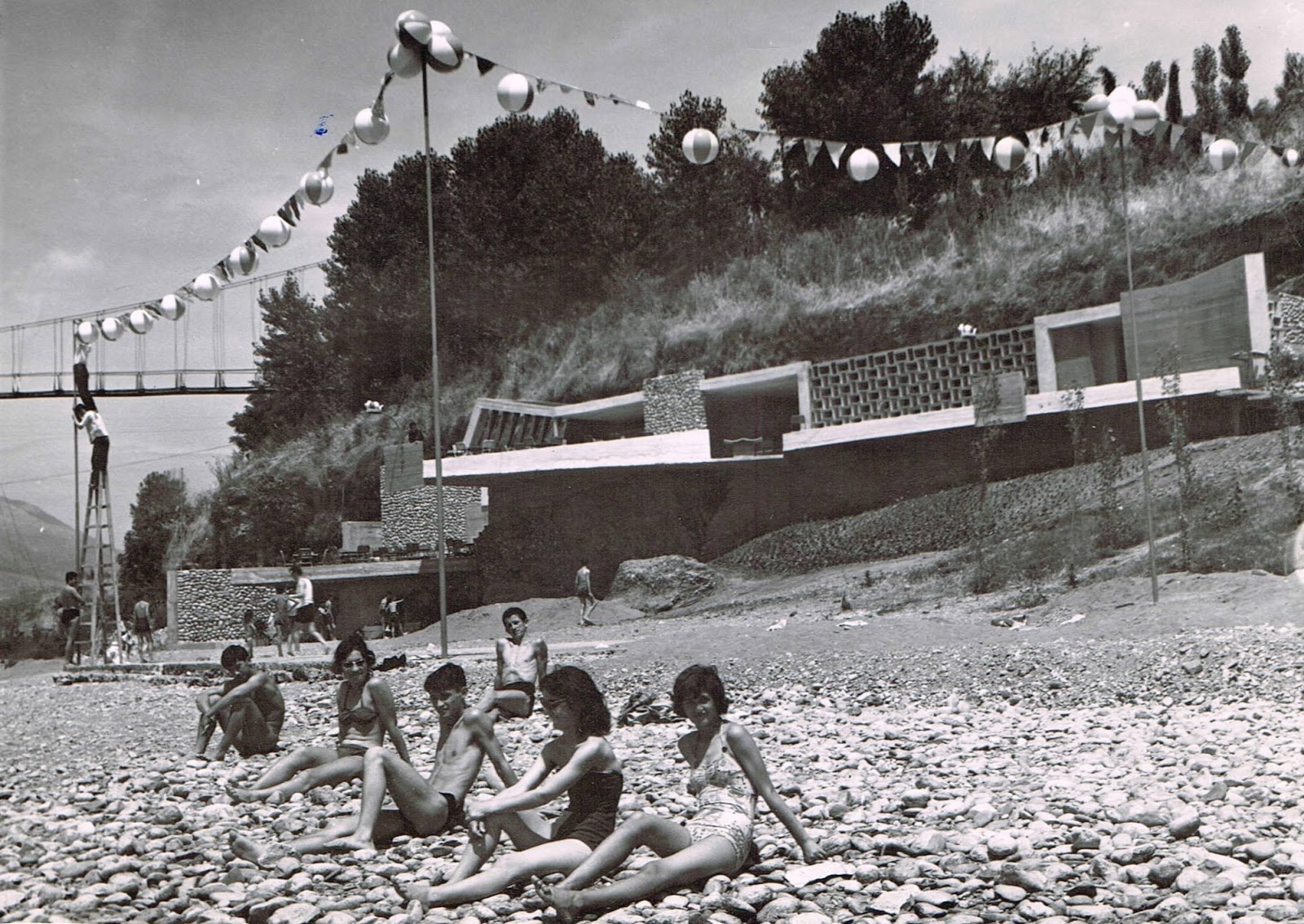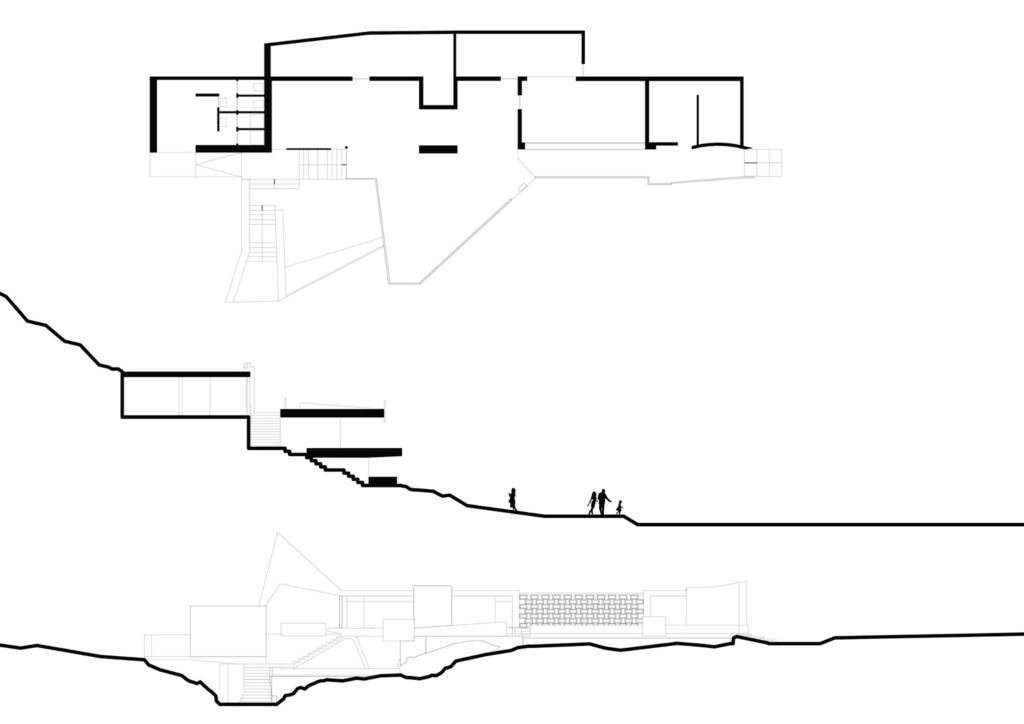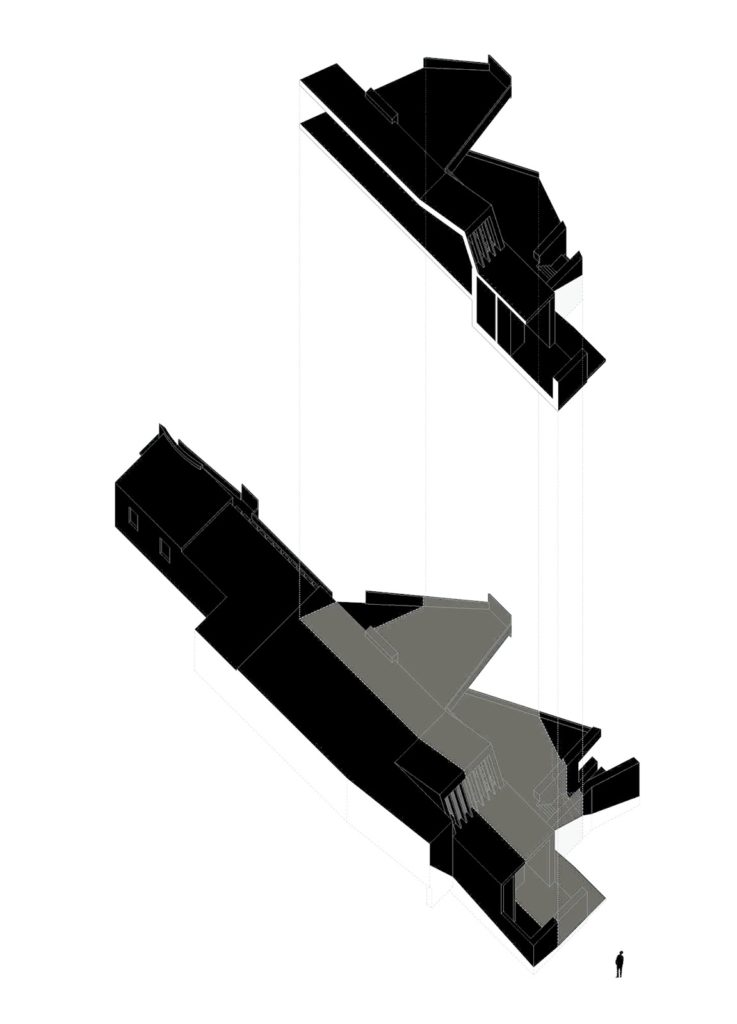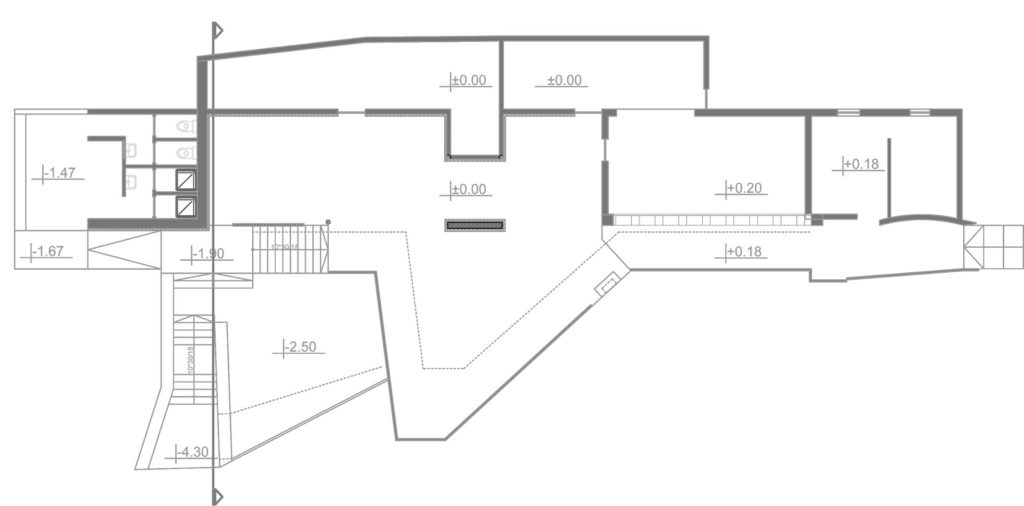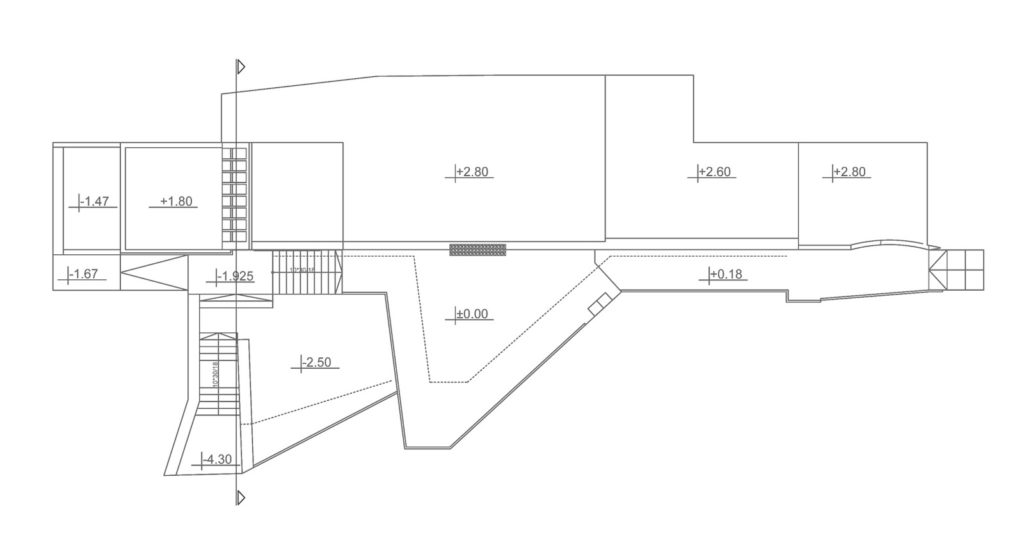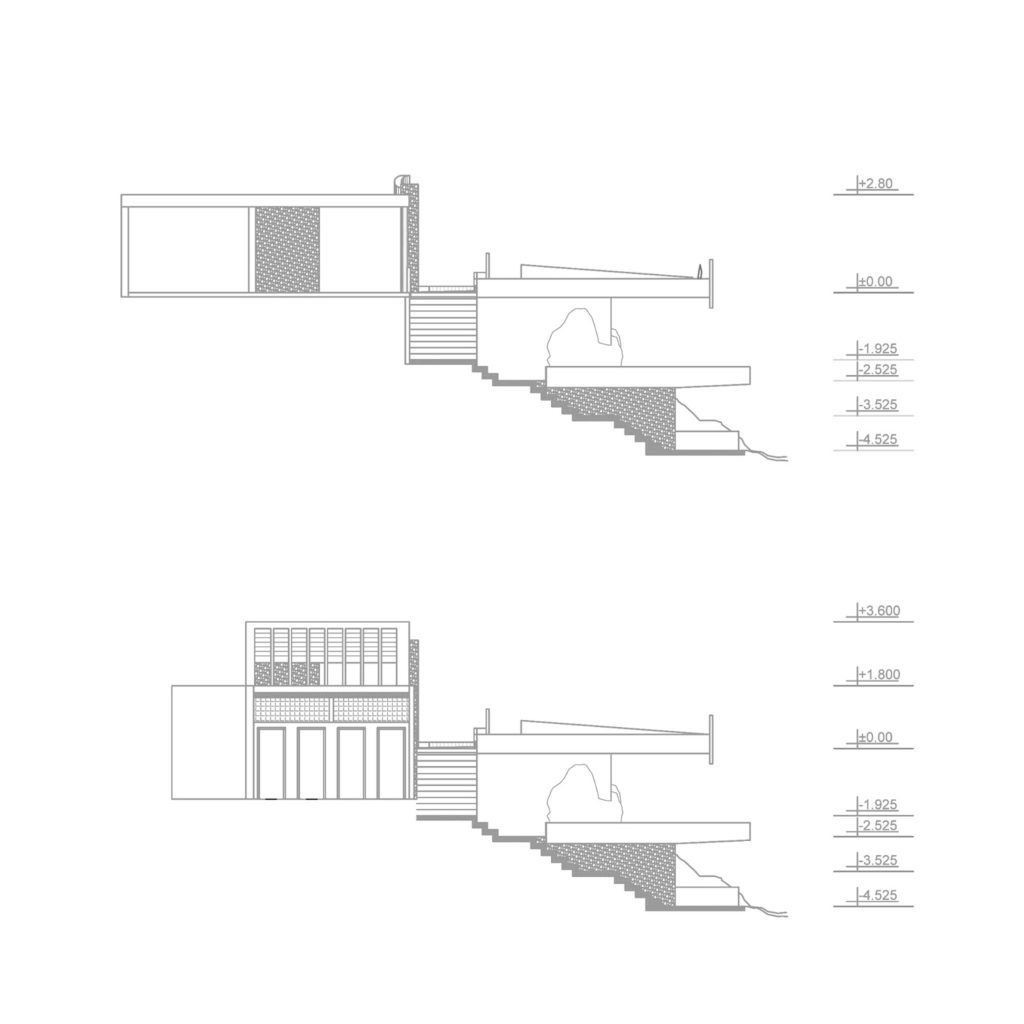This article is part of Obscured by Clouds, a personal project curated by Biljana Janjušević about architectural heritage of Balkans region, with emphasis on local interpretation of Yugoslav socialist modernism. The concept is fragmented into mini-series , depending on the state – three articles per individual country, with an aim to raise awareness of lesser known architecture of Mediterranean region.
Este artículo es parte de Obscured by Clouds, un projecto personal comisariado por Biljana Janjušević sobre el patrimonio arquitectónico de la región de los Balcanes, con énfasis en la interpretación local d el modernismo socialista yugostlavo. La serie se fragmenta en mini’series, dependiendo del estado: tres artículos por páis, con el objetivo de crear conciencia sobre la arquitectura menos conocida de esta región mediterránea.
One of the biggest challenges that the architect may have to face is the task to intervene in an extremely valuable natural environment. Such a task implies the ethical question of the position of human in relation to nature. Whether one masters the environment or depends on it? The answer essentially includes both categories. If we take into account the careful analysis and thoughtful action, architecture as a product of human labor can improve the natural landscape. The example of the kayak club Galeb is evidence.
Uno de los desafíos más grandes que el arquitecto puede tener que hacer frente es la tarea de intervenir en un entorno natural extremadamente valioso. Tal tarea implica la cuestión ética de la posición del ser humano en relación con la naturaleza. ¿Uno domina el medio ambiente o depende de él? La respuesta incluye esencialmente ambas categorías. Si tomamos en cuenta el análisis cuidadoso y la acción reflexiva, la arquitectura como producto del trabajo humano puede mejorar el paisaje natural. El ejemplo del club de kayak Galeb es una muestra de ello.
The building is located on the left bank of the Moraca River, overlooking the Labud beach. It was completed in 1960, designed by architect Vukota – Tupa Vukotić. Despite being planned to accommodate a restaurant, kayaking club and beach café, it is currently in a deplorable state. After only one summer of kayaking activity, the club was abandoned but maintained its existence as beach bar. The explanation for cancellation of function is rather simple – the society has changed its’ value system. So, once famous sport and recreation hotspot is now cherished by no one, but it is still appreciated for the distinctive architecture.
El edificio está situado en la margen izquierda del río Moraca, con vistas a la playa del Labud. Fue terminado en 1960, diseñado por el arquitecto Vukota – Tupa Vukotić. A pesar de estar planeado para albergar un restaurante, club de kayak y cafetería de playa, actualmente se encuentra en un estado deplorable. Después de sólo un verano de actividad de kayak, el club fue abandonado, pero mantuvo su actividad como bar de la playa. La explicación para la cancelación de la función es bastante simple: la sociedad cambió su “sistema de valores”. Por lo tanto, el un día bien apreciado punto de ocio y recreo es ahora condenado al olvido, aunque aún apreciado por su arquitectura.
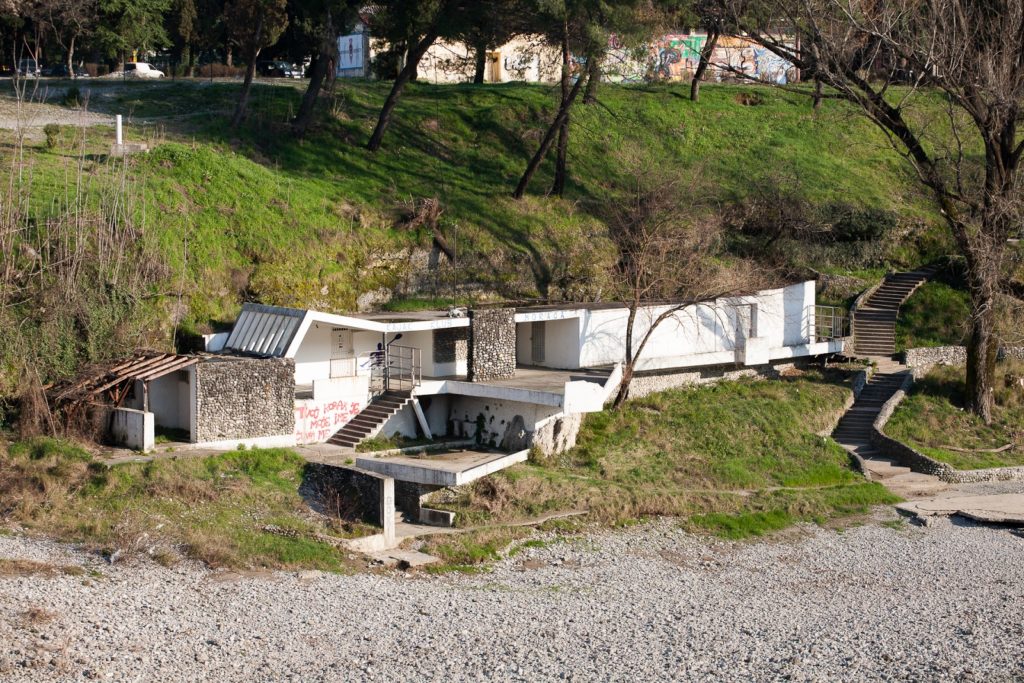
On the one hand, Kayak club Galeb is untypical represent of socialist modernist by its size, but very typical in term of the architectonics on the other. Rarely is the one storey building of cca 400m2, packed with so many micro ambient and spatial values. Here, we have wide open terrace which hovers above the river beach. Particular use of authentic river stone is reminiscence to Hotel Podgorica, which is situated on the opposite bank of river Moraca. The similarity between the two buildings is undeniable, as both contain emphasized genius loci. Also, it is noticeable that architect was not afraid to use color, regardless of the overall brutalism expression of the form. Special openings on the north façade treat even service spaces like toilets and changing rooms as the spaces of refined architectural vocabulary. Staircase leading from the upper hill to the building and then further to the beach, descends so spontaneously as if it always existed on the location. Nevertheless, most important feature of this building was its mere programme. Courage and sensibility are needed to incorporate sports activity that always aims to expand, to the locations of great natural value, but still to avoid distortion the natural balance of the rocky coast by architectural intervention. Architects like Vukota Tupa Vukotic remind us clearly, why architecture is one of the most noble and creative human activities.
Por un lado, el club Kayak Galeb es una atípica representación de la modernidad socialista por su tamaño, pero muy típico en términos arquitectónicos por otro lado. Rara vez un edificio de tan sólo 400m2, presenta tantos y tan diferentes cualidades espaciales. Aquí, tenemos amplia terraza abierta que se inclina sobre la playa del río. El uso particular de la piedra procedente del río es una reminiscencia al Hotel Podgorica, que está situado en la orilla opuesta del río Moraca. La similitud entre los dos edificios es innegable, ya que ambos albergan un genius loci acentuado. Además, es notable que el arquitecto no tuviese miedo de usar el color, independientemente de la tendencia hacia el brutalismo apreciable en la estructura general. Las aberturas especiales en la fachada norte dotan incluso a espacios de servicio como inodoros y vestuarios con un refinado vocabulario arquitectónico. La escalera que lleva a la parte superior del edificio y luego más allá de la playa, desciende tan espontáneamente como si siempre hubiera existido en la ubicación. Sin embargo, la característica más importante de este edificio era su mero programa. Coraje y sensibilidad son necesarios para incorporar una actividad deportiva, que siempre tiende a expandirse, a un entorno de gran valor natural, evitando distorsionar el equilibrio natural de la costa rocosa por intervención arquitectónica. Arquitectos como Vukota Tupa Vukotic nos recuerdan claramente por qué la arquitectura es una de las actividades humanas más nobles y creativas.

To conclude, it is most honest to say that sometimes universal values of architecture can be diminished by society, but sooner or later those will be recognized as certain cultural heritage. That is precisely the reason why this small building, rose to the heights of Montenegrin exhibition at Venice Biennale named appropriately – Treasures in Disguise, and is also featured in every book, publication or exhibition on history of Montenegrin architecture.
A modo de conclusión, sería honesto decir que a veces los valores universales de la arquitectura pueden ser disminuidos por la sociedad, pero tarde o temprano éstos serán reconocidos como cierto patrimonio cultural. Esa es precisamente la razón por la que este pequeño edificio fue considerado una de las claves de la exposición montenegrina en la Bienal de Venecia, denominada apropiadamente Tesoros Disfrazados, y también aparece en cada libro, publicación o exposición sobre la historia de la arquitectura montenegrina.
Literature: http://treasures-in-disguise.net/
Cover image by National Archive of Montenegro
Images of current state by Luka Boskovic photography
